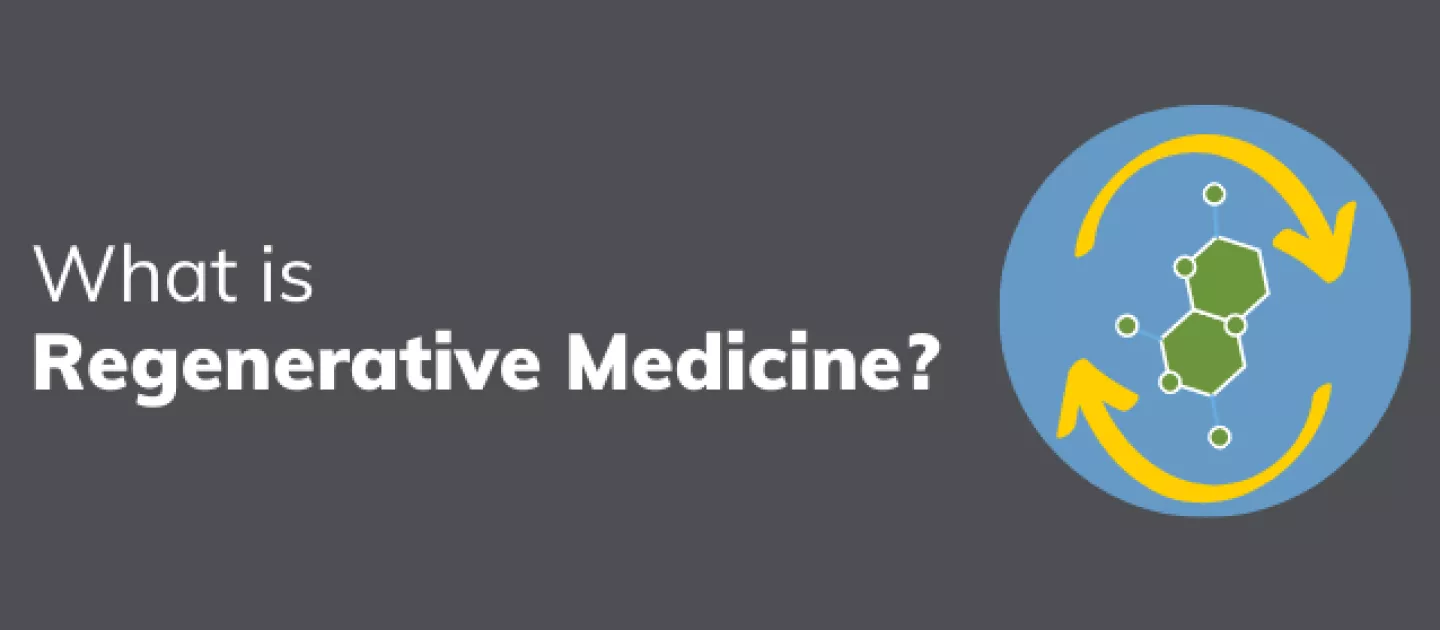Our bodies are capable of doing amazing things, especially when it comes to healing itself. If we break a bone, our body creates new cells to mend the bone back together. When we get a cut, blood platelets form clots to stop the bleeding. Or when we are sick, our body fights off the virus attacking it. Sometimes there are situations when our body can’t repair itself on its own and needs a little help . . . especially when it’s been damaged by a chronic disease.
This is where regenerative medicine comes in. Regenerative medicine is a newer area of science where researchers are studying how certain therapies can regenerate and repair the body’s damaged cells, tissues and organs. Some of these therapies include the use of umbilical cord blood and cord tissue stem cells. Here, we’ll explain a little more about regenerative medicine and why cord blood and tissue stem cells are leading candidates in the development of new therapies.
Why Cord Blood and Tissue Stem Cell Are Important to Regenerative Medicine
What is it about umbilical cord blood and tissue stem cells that make them such a potentially valuable resource for regenerative medicine?
Let’s start with the fact that umbilical cord blood is a rich source of hematopoietic stem cells (HSCs). These stem cells have the ability to form blood and immune cells inside the body and have the important job of renewing and reproducing these cells so the body can continue to function and you can stay healthy. Its unique qualities to rebuild new healthy blood and damaged immune systems are one of the primary reasons researchers are so interested in using them in regenerative medicine research.
When we look at cord tissue stem cells, well, we find a very different type of cells. Cord tissue is rich in Mesenchymal Stem Cells (MSCs). How are these cells different from hematopoietic stem cells? MSCs rapidly divide, regenerate, and differentiate into many different cell types, respond to inflammation, and help repair tissue. Because these cells are much more diverse in its ability to help the body, there is a lot of interest in using them for research. Some of the ways they are being used offer hope to so many people living with conditions with no current cure.
What are Cord Blood and Tissue Stem Cells Being Researched For?
When your body needs help bouncing back from damage, it makes sense one would want to call upon one’s own stem cells for help. The capabilities that they have to repair and heal the body are why they also have such great potential to be used as a treatment in regenerative medicine for certain conditions.
Cord Blood Stem Cells and Regenerative Medicine:
Cord blood stem cells have been used in a number of exciting clinical research trials. In research for autism studies have shown improvements in communication and reduced symptoms. In cerebral palsy, it has helped improve brain connection and motor function. Cord blood stem cells are even being studied to help strengthen the hearts of children who have Hypoplastic Left Heart Syndrome.
Cord Tissue Stem Cells and Regenerative Medicine:
Because cord tissue stem cells can help heal the body in different ways than cord blood stem cells can, researchers are investigating their potential to help conditions that affect cartilage, muscle, and nerve cells. Some of these conditions include;
- Parkinson’s disease
- Alzheimer's
- Autism
- Type 1 diabetes
- Lung cancer
- Rheumatoid arthritis
- Sports injuries
- Lupus
- COVID-19
There’s no doubt that cord blood and tissue stem cells have a lot to offer in treatment, and families who are suffering from certain conditions that don’t have a cure or treatment have a reason to be optimistic about the progress we’ve seen in regenerative medicine research. With each day, we see the science around our health changing a bit more. What does that mean for us? We think researchers will continue to make progress using cord blood and cord tissue stem cells to help treat diseases and conditions once thought to be incurable.
Follow us on Facebook, Twitter, and Instagram to join the conversation and stay up-to-date on cord blood & tissue, genetics, pregnancy, and everything in between!
Disclaimer: Banking cord blood does not guarantee that treatment will work, and only a doctor can determine when it can be used. PerkinElmer does not endorse or make recommendations with respect to research, medication, or treatments. All information presented is for informational purposes only and is not intended as medical advice.











